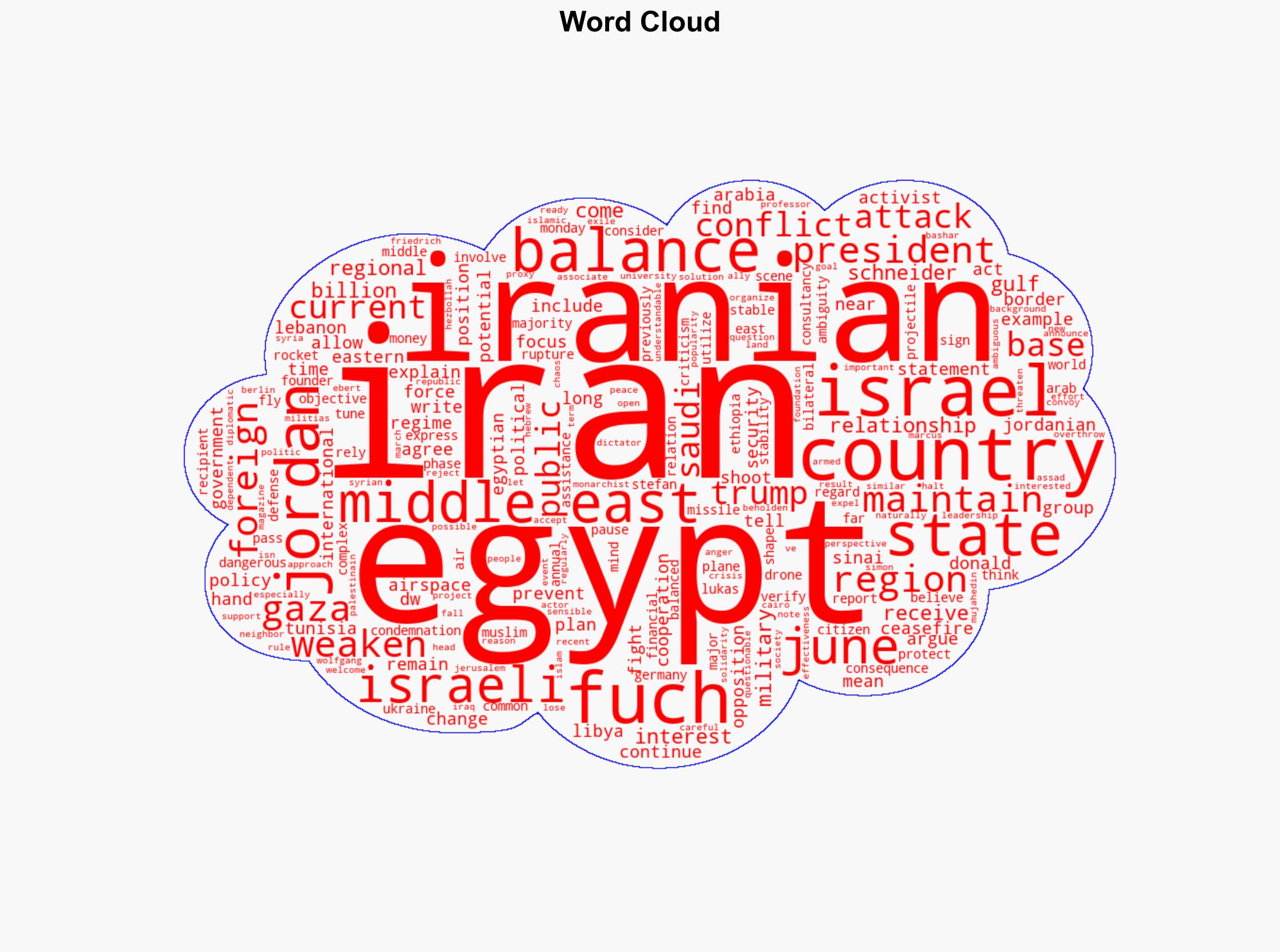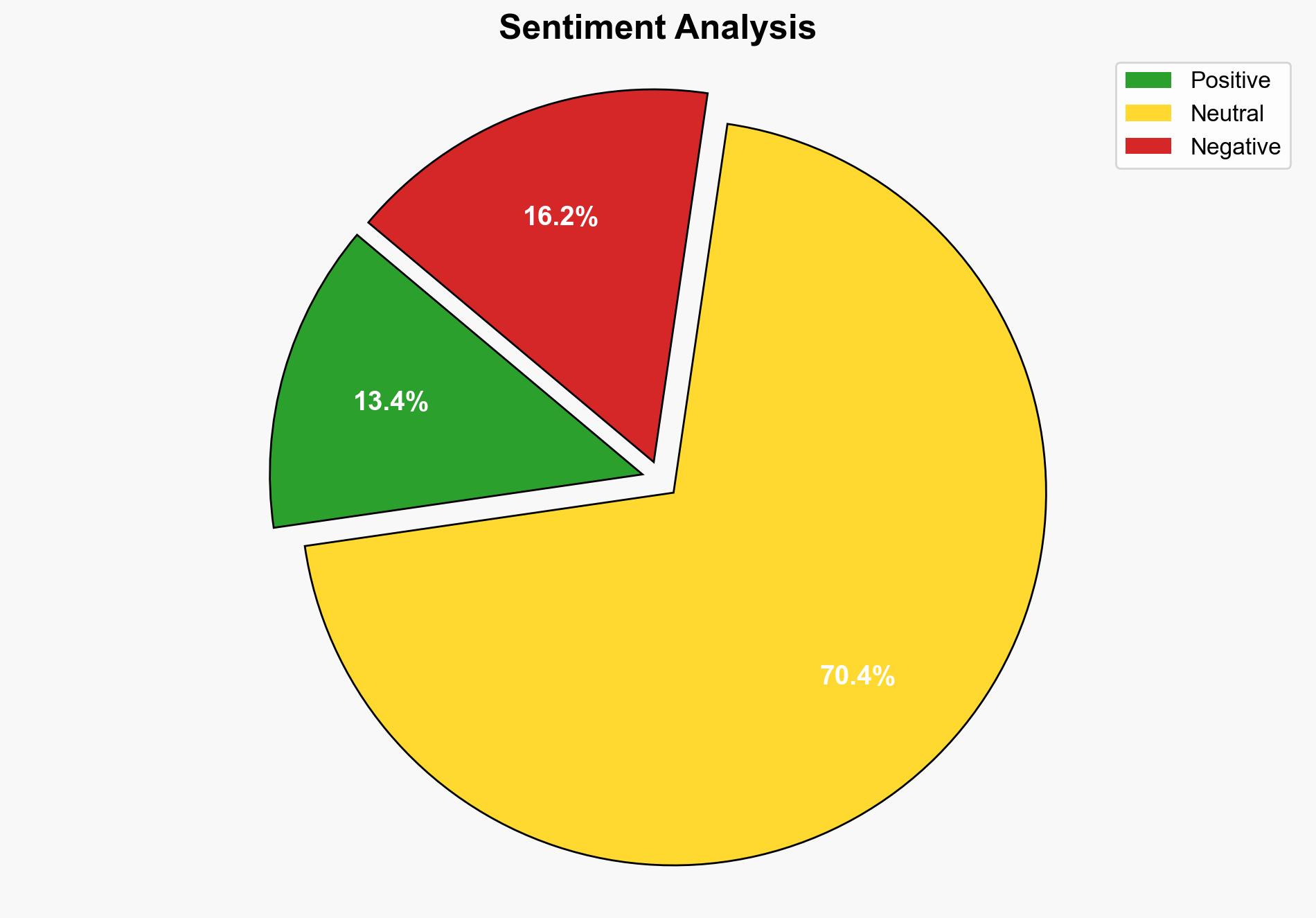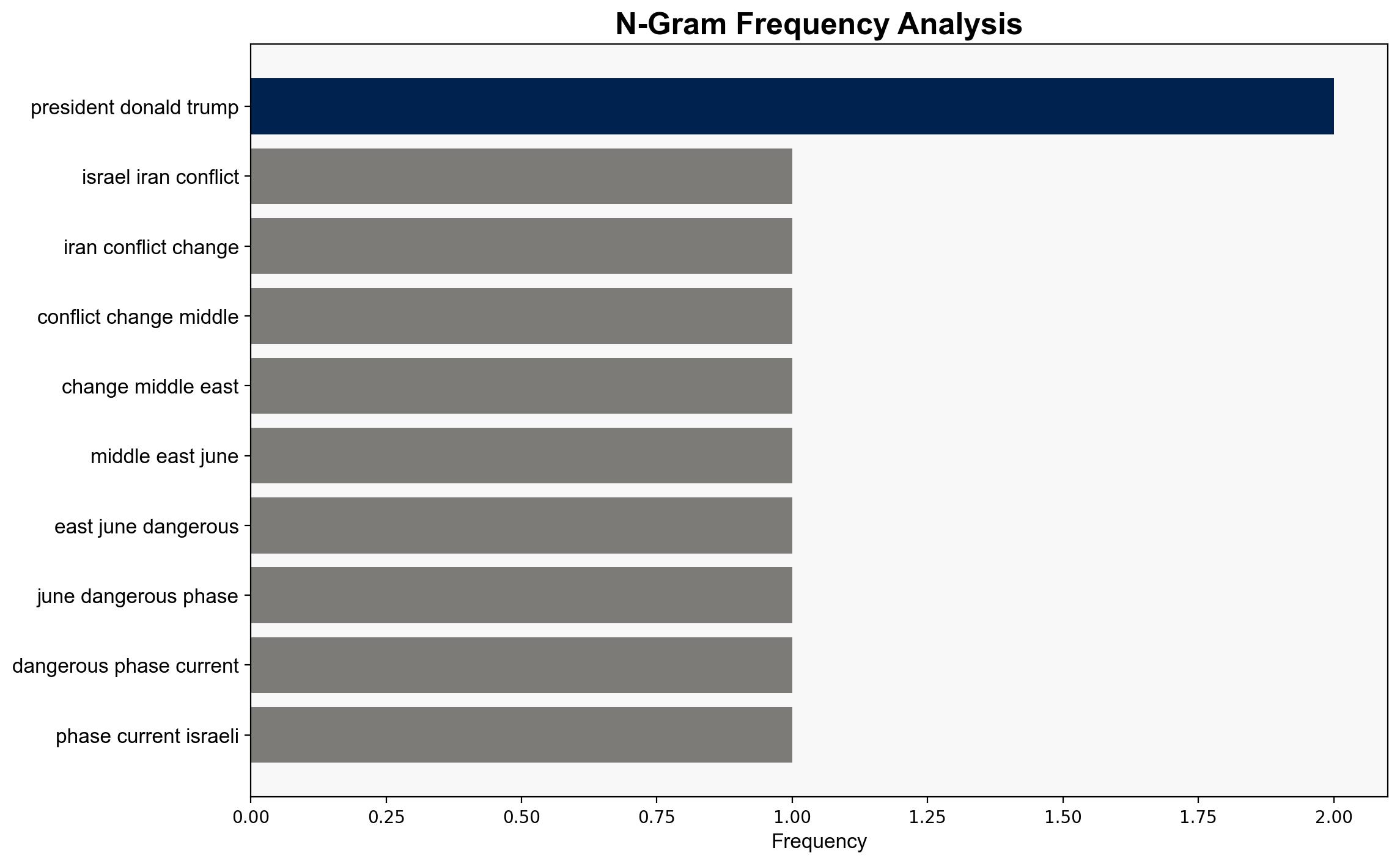Has Israel-Iran conflict changed the Middle East – DW (English)
Published on: 2025-06-27
Intelligence Report: Has Israel-Iran conflict changed the Middle East – DW (English)
1. BLUF (Bottom Line Up Front)
The Israel-Iran conflict has entered a precarious phase, impacting regional stability and alliances. Key findings indicate that while a ceasefire has been agreed upon, underlying tensions persist. Regional actors like Jordan and Saudi Arabia are navigating complex diplomatic landscapes, balancing public condemnation with covert cooperation. The Gulf states and Egypt are particularly focused on maintaining stability while managing their relationships with Iran. Strategic recommendations include enhancing diplomatic engagement and preparing for potential escalations.
2. Detailed Analysis
The following structured analytic techniques have been applied to ensure methodological consistency:
Causal Layered Analysis (CLA)
Surface events include recent ceasefire agreements and public statements by regional actors. Systemic structures reveal a network of military and financial dependencies, particularly involving Jordan and Saudi Arabia. Worldviews are shaped by historical animosities and strategic interests, while myths perpetuate the notion of inevitable conflict.
Cross-Impact Simulation
Modeling suggests that increased cooperation between Israel and Gulf states could alter power dynamics, potentially isolating Iran further. Economic dependencies, such as Jordan’s reliance on foreign aid, play a critical role in shaping policy decisions.
Scenario Generation
Scenarios range from a stabilized region with increased diplomatic ties to escalated conflict resulting in broader regional instability. Key variables include the actions of proxy groups and shifts in U.S. foreign policy.
3. Implications and Strategic Risks
The conflict poses several risks, including potential military escalations and disruptions in oil supply routes. Cyber threats and proxy warfare remain significant concerns, with the potential to destabilize governments and economies. The involvement of external powers could further complicate the situation, leading to a multi-front conflict.
4. Recommendations and Outlook
- Enhance diplomatic channels to facilitate dialogue between conflicting parties and regional stakeholders.
- Strengthen cyber defenses and intelligence-sharing mechanisms to counter potential cyber threats.
- Scenario-based projections suggest that the most likely outcome is continued tension with intermittent diplomatic breakthroughs. Worst-case scenarios involve regional escalation, while best-case scenarios see a gradual normalization of relations.
5. Key Individuals and Entities
Stefan Lukas, Simon Wolfgang Fuchs, Marcus Schneider
6. Thematic Tags
national security threats, cybersecurity, counter-terrorism, regional focus





